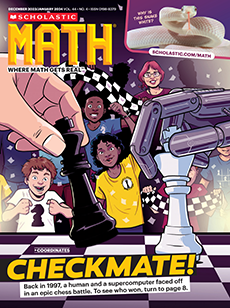Display a coordinate plane with a diagonal line drawn on it connecting two points. Do a think-aloud or have a student volunteer describe how to draw two legs on the diagonal line to make a right triangle with the given line as the hypotenuse. Ask: How many units long would each leg need to be to make a right triangle? Then tell students they can use a formula to find the distance of a missing leg, or side length, when working with right triangles.
CCSS: 8.G.B.7, 8.G.B.8, MP4, MP5, MP7
TEKS: 8.7C, 8.7D
